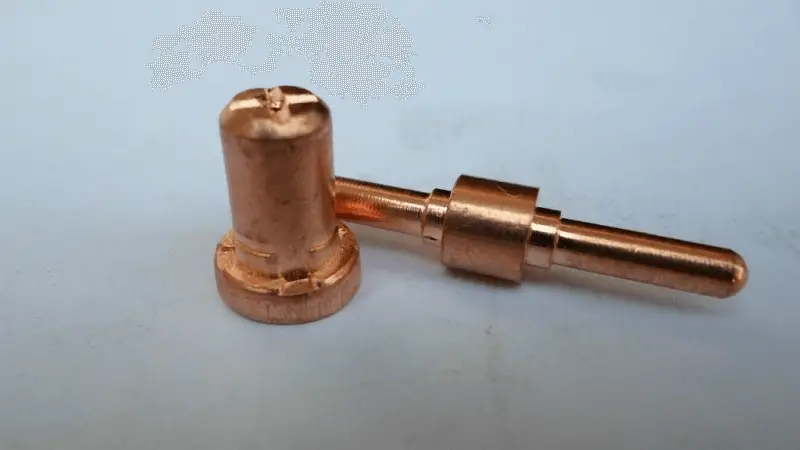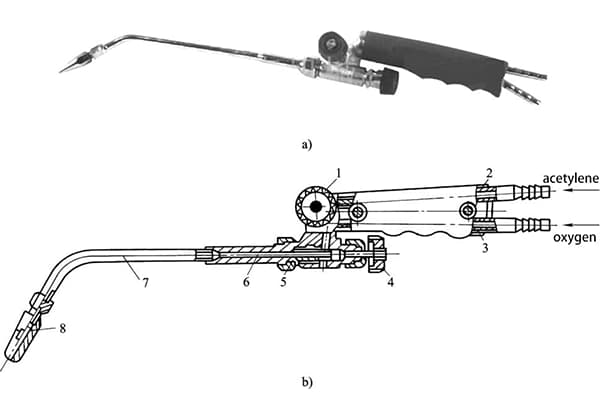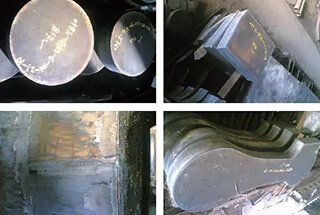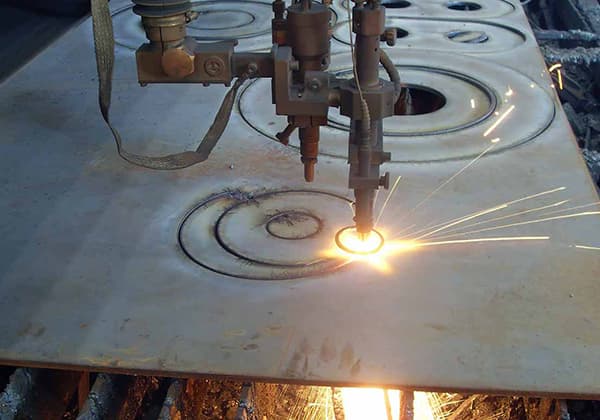An air plasma cutting machine is a tool designed for cutting medium and thin metal plates. It offers various advantages such as flexible and convenient operation, smooth workpiece incision, narrow cutting seam, small thermal deformation, easy slag removal, and high cutting efficiency.
Nonetheless, the cutting torch nozzle is prone to damage, which can negatively impact the cutting efficiency and quality, and subsequently increase the cutting cost.

To decrease the cutting cost and extend the lifespan of plasma cutting electromechanical electrode nozzle, it’s essential to consider the following points:
1. Ensure the correct air pressure and flow of plasma
The precise pressure and flow of plasma are crucial for ensuring the longevity of consumer parts.
If the air pressure is too high, it can significantly reduce the service life of the electrode.
Conversely, if the air pressure is too low, it can impact the service life of the nozzle.
2. Adopt reasonable cutting height
Please ensure to maintain a suitable cutting height as per the operation manual, which refers to the distance between the cutting nozzle and the surface of the workpiece.
When perforating, it is recommended to use a cutting height slightly higher than the specified perforation height mentioned in the parameter table.
3. The perforation thickness shall be within the allowable range of the machine system
The cutter is unable to punch through steel plates that exceed the maximum working thickness. Typically, the perforation thickness for cutting thinner materials (below 100A) is half of the normal cutting thickness.
For instance, if the 100A system is designed to cut through one inch (approximately 25mm) of carbon steel, then the perforation thickness of the system should be 0.5 inch (about 12.5mm).
4. Do not overload the nozzle
Exceeding the working current of the nozzle, also known as overloading, can cause quick damage to the nozzle. It is recommended that the current intensity is set to 95% of the working current of the nozzle. For instance, if the working current of a nozzle is 100A, then the current intensity should be set to 95A.
5. Keep the plasma gas dry and clean
The plasma system requires dry and clean plasma gas to function properly.
Dirty gas is usually caused by issues with the gas compression system, which can reduce the lifespan of consumer parts and cause abnormal damage.
To test the quality of the gas, place the cutting torch in the test state and hold a mirror under it to consume the gas from the torch.
If water vapor and fog appear on the mirror, it is necessary to identify and correct the underlying cause.
6. Cutting shall start from the edge
Whenever possible, cut from the edge instead of going through the hole. This approach will help extend the lifespan of consumables.
To achieve the best results, align the nozzle directly with the edge of the workpiece before starting the plasma arc. This is the correct method to use.
7. Avoid plasma arc stretching and expansion
If the plasma arc only comes in contact with the workpiece surface through stretching and expanding, it will cause abnormal damage to the nozzle at the start and end of plasma arc cutting.
This issue can be prevented by using the correct edge starting point technique and selecting the appropriate “arc breaking” signal time.
8. Reduce unnecessary arcing (or arc guiding) time
The consumption rate of nozzles and electrodes is high during the arcing process.
Prior to starting, ensure that the cutting torch is positioned within a reasonable walking distance from the metal being cut.
9. Apply splash-proof chemical coating on the protective shell
The splash-proof chemical coating is effective in minimizing the buildup of slag on the protective casing.
However, it is necessary to remove the protective shell from the cutting torch prior to applying the anti-splash coating.
10. Remove the slag on the protective shell
Always remove the slag from the cutting torch protective shell, as otherwise, it can cause a destructive heavy plasma arc.
11. Remove the gas after replacing the consumable parts
After replacing consumable parts or during a long-term shutdown, it is essential to remove the gas for 2-3 minutes to ensure that any water and mist are discharged from the cutting torch.
12. Try to keep the cutting torch and consumables clean
Any dirt on the cutting torch or consumable parts can significantly affect the plasma system’s functionality.
When replacing consumable parts, place them on a clean flannelette. Regularly inspect the connecting rib of the cutting torch and use hydrogen peroxide detergent to clean the electrode contact surface and nozzle.
13. Remove oxides from air or oxygen nozzles
When air or oxygen plasma is used, oxide can accumulate inside the nozzle, which can disrupt the airflow and reduce the lifespan of consumable parts.
To prevent this, use a clean lint cloth to wipe the inside of the nozzle and remove any oxides.
14. Inject softened water into the cutting torch
Hard water can cause metal impurities to precipitate on the nozzle ring, leading to airflow disruption, reduced cutting torch quality, and a shortened lifespan for consumable parts.
15. Check the airflow and coolant flow every day
One of the most common causes of damage to cutting torches is the lack of cooling flow. Therefore, it is essential to regularly check the airflow and air pressure, including air cooling or coolant, such as water cooling, to ensure the proper functioning of the cutting torch.
If you notice that the airflow is insufficient or leaked, it is crucial to shut down the equipment immediately to eliminate the fault.


